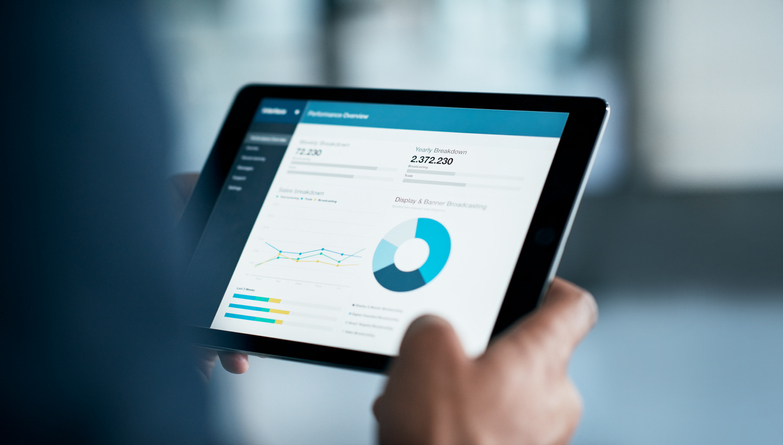Understanding Cap Tables for Start-ups
Capitalization tables—”cap tables” for those who don’t have time for extra syllables—map the balance of power in a company. If org charts are about people power, cap tables are about money power. In simplest terms, they track how ownership of a company is divided. In reality, however, cap tables are often far more complex. Let’s dive deeper into understanding cap tables; what they are, why (and to whom) they matter, and how they’re used.
What is a cap table?
Cap tables list a company’s authorized and outstanding shares, the parties to which those shares have been assigned, and the various metrics relevant to managing them. Such metrics can include an investor’s liquidation preference, option exercise windows and expiry dates, and shareholders’ fully diluted ownership percentages. It’s important to note that the structure and contents of a cap table are unique to how a company has chosen to divide its equity.
Cap tables are also used to model waterfalls and what-if scenarios, giving companies a better understanding of how different events might impact shareholder payouts and equity dilution. But companies and their executives aren’t the only parties interested in the upkeep of a neat and accurate cap table. A company’s investors and legal counsel both have a hand in monitoring and maintaining a reliable ledger of equity division.
Why do cap tables matter?
In the early days, tracking the percentage of ownership in a startup is easy. There’s the owner—maybe a partner or two—but unless employees are offered equity from the get-go, there’s typically not a whole lot of dilution. Things can escalate quickly, however, when a startup decides to seek investors. Raising investment capital means raising the stakes on managing a cap table. Suddenly, businesses face a serious obligation to maintain an organized and accurate depiction of how their equity is divided. The “stakes” of maintaining an organized cap table increase in relation to the number of shareholders a company answers to and the capital those shareholders stand to lose (through mismanagement, inaccuracy, etc.). In human terms: (1) the number of people you stand to anger and (2) the angrier they stand to be if errors are made.
But answering the question of why cap tables matter doesn’t end there. A well-kept cap table is a necessary ingredient of proper recordkeeping long after a startup has “started up”. Over time, a company might issue new shares of capital stock or buy back shares of existing stock. Companies may even broaden the range of securities offered, as they would by offering options or grants. Shares begin to move around as they’re privately bought and sold. These events add complexity to a company’s equity and ownership structure, making the need for maintaining an organized cap table all the more evident.
How are cap tables used?
It’s not unusual for owners to offer equity to early employees and advisors, both as a motivator and a form of compensation before the business turns a profit. If shares are diluted before the company begins raising capital, tracking the dilution of equity in a cap table prevents conflict and misunderstandings later on down the road.
Cap tables come into play when it comes time for a startup to raise capital. Most entrepreneurs enter into investor negotiations with an assessment of what their business is worth, the percentage of ownership they’re willing offer, and the amount they’re seeking in return. Cap tables are throughout these negotiations to model potential pre- and post-money valuations. They are also used in investor negotiations to translate the quantity, series, and class of shares purchased to percentages of ownership in the company. Investors also rely on cap tables to model the dilution of shares as the company moves through different rounds of funding.
Cap tables can play an essential role in scenario modeling; particularly in waterfall analyses, using a series of assumptions to model shareholder payouts in a variety of liquidity events. Some startups prepare waterfalls before entering into seed or series funding to model hypothetical liquidity events for potential investors. Maintaining an accurate and organized cap table—complete with models for a variety of hypothetical exit scenarios—helps prepare a company and its shareholders for whatever the future might hold.
Companies may use equity as an incentive when recruiting executives and board members. Tracking the allocation of equity to senior-level talent is handled in the cap table. Issuing new securities (or more of an existing security) may dilute the equity of the company’s current shareholders and therefore impacts its cap table. In short, any time a company’s ownership structure changes, so too does its cap table.
What’s included in a cap table?
There are no hard and fast rules for what has to be included in a cap table. There are multiple types of security with which a company may divide its shares as well as a variety of scenarios for which a company may want to prepare models. It makes sense, then, that no two cap tables would look the same. However, it’s worth discussing some of the common elements businesses choose to include.
Shareholders: Name & Role
One of the universal elements of cap tables is a list of the people or parties who make up a company’s shareholders. Most businesses prefer to keep this list as specific as possible; for example, listing names as they appear on the company’s stock certificates. In some situations, however, it may be more appropriate to use a group/party name (as in cases where multiple venture capital groups have invested in a company). It’s also common for businesses to list the “employee pool” of shares as a single party.
Shareholder names and parties can be further divided by the role they play in the companies success. Roles may include a company’s founders, investors (including the stage/series in which their investment was acquired), executives (including their titles), and board members.
Shares: Security & Share Class
Cap tables include a column which lists the quantity of shares each shareholder owns. Securities can be broken up across multiple columns based on the company’s share structure. Two of the most popular equity securities found on a cap table are common and preferred stock. Cap tables may also include derivatives such as warrants and options.
Note that companies may differ in granularity, both in how shares are issued as well as how they appear on a cap table. Increasing a table’s granularity adds to its complexity, heightening the difficulty of efficient organization and effective management. However, the challenge of maintaining a highly-granular cap table is often outweighed by the benefits of reducing ambiguity surrounding a company’s share structure.
Dilution: Equity Value & Percentages
Cap tables commonly include rows detailing the quantity, dollar value, and percentage of fully diluted shares for each shareholder. This gives investors a better idea of a company’s value as well as their share of ownership if all outstanding convertible securities were suddenly exercised.
Funding Rounds: Series & Capital Raised
Companies typically list the capital raised at each round of funding. This may include (for each round), listing:
- the names of the shareholders acquired,
- their percentage of ownership,
- the dollar value of their investment,
- the dollar value per share, and
- the number of shares owned.
This allows shareholders to monitor the dilution of equity and may guide their actions as the company prepares to enter into a new round of funding.
Liquidation Preferences
Some cap tables list shareholders’ liquidation preferences. Keeping an accurate record of multiples is important when modeling hypothetical liquidity events. Failure to understand and track how liquidation preference impacts equity dilution can result in disastrously misleading projections ahead of a dividend payout.
Dates
Keeping track of dates might not appear particularly difficult at first glance. While, most cap tables account for key dates—such as the day a stock certificate is issued—many companies are also forced to account for the expiry dates of securities like warrants or employee stock options. Tracking the expiry dates and exercise windows of employee shares can particularly challenging, as employees come and go at a much faster pace than investors.
Totals & Summaries
Most cap tables list the total number of authorized shares—the number of shares a company may issue, outstanding shares—the number of shares the company has issued (and are currently held by shareholders), and unissued shares—the number of shares available to offer new investors, employees, board members, etc. This summary often includes the number of shares reserved for employee stock options and other such incentive programs.
Outside of shareholder names and dates, most of the data recorded in a cap table is totaled or summarized to provide investors, executives, and board members with a high-level view of a company’s equity and ownership percentages.
Conclusion
Cap tables mean different things to different groups. A company’s founders, its employees, investors, and legal counsel—each may vary in how they define a cap table. Each might say it matters for a different reason and model its data based on a different set of priorities. Diligent Equity is designed to be user-friendly, no matter who that user may be. The platform lets founders and employees update, monitor, and generate reports on their equity dilution while allowing investment funds to track performance across its portfolio. Diligent Equity delivers peace of mind on both sides of the investor-portfolio relationship, ensuring everyone works off the same data with granular permissions and access control. The software boasts powerful modeling tools for waterfalls and what-if scenarios. Create your free Diligent Equity account today to see what best-in-class cap table management can do for you.



